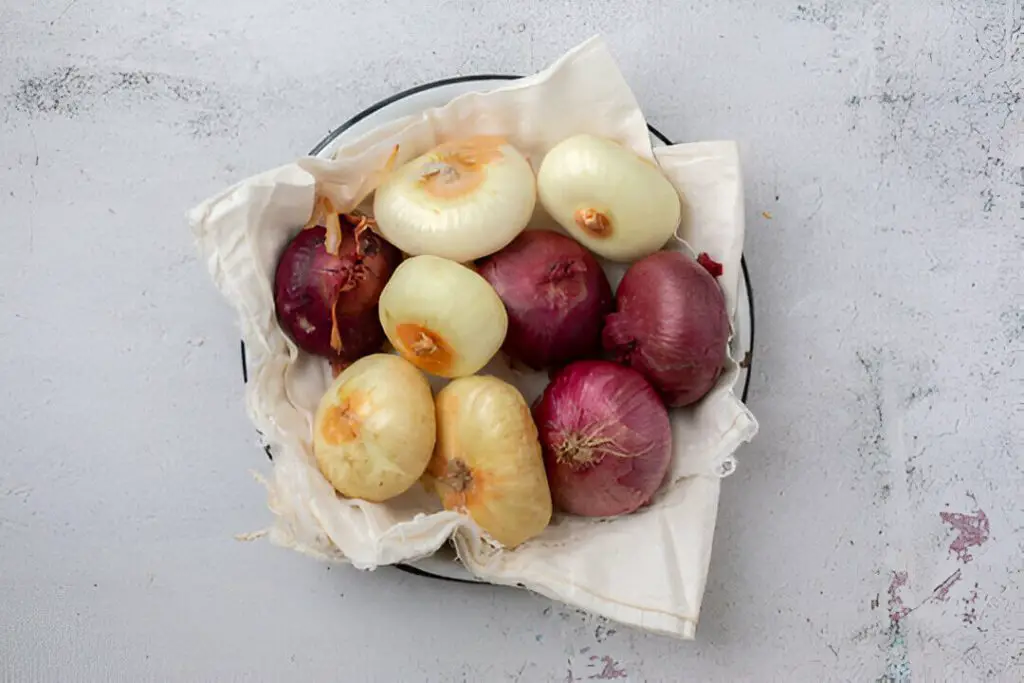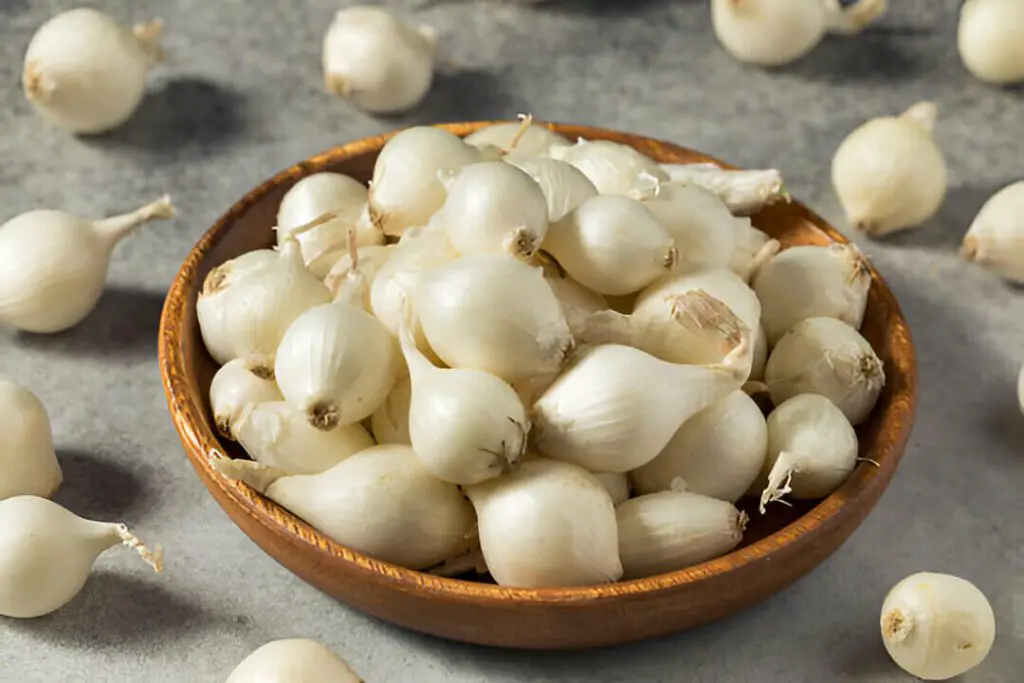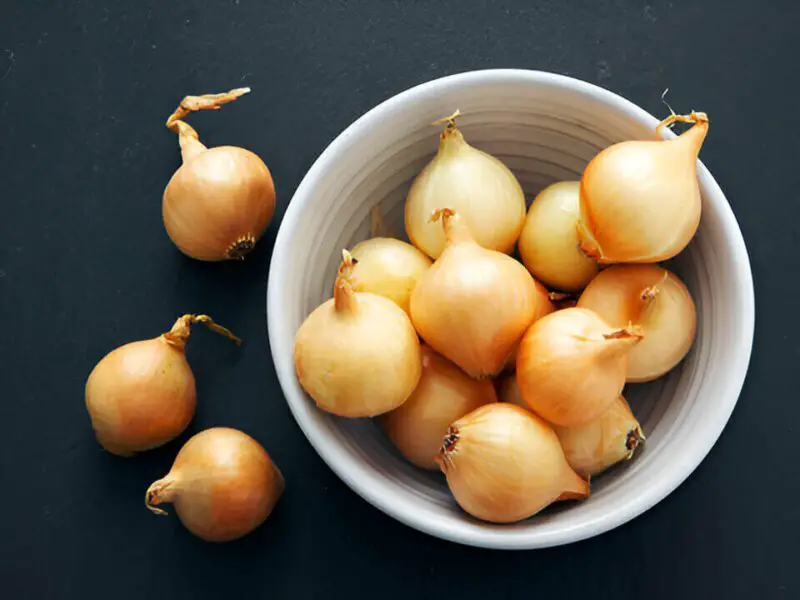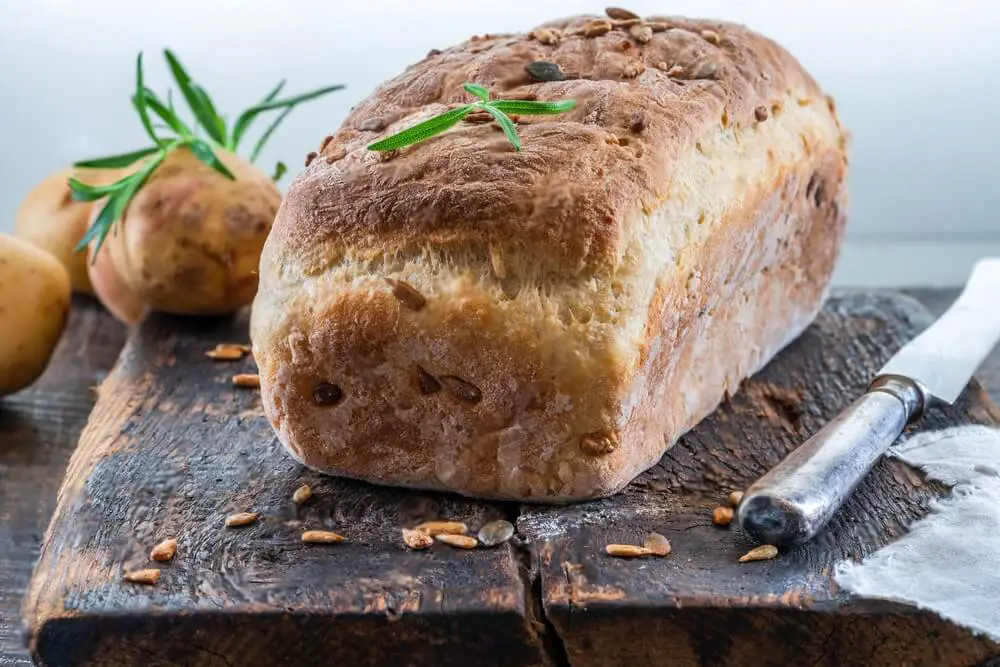Cipollini vs. pearl onions, when it comes to small, sweet onion varieties, things can get a bit confusing. Cipollini and pearl onions are often used interchangeably in recipes, but did you know they’re actually quite different? Don’t worry, we’re here to demystify the mysterious world of miniature onions for you!
If you’ve ever found yourself standing in the produce aisle, staring at those adorable little onion bunches and wondering, “What separates the cipollini from the pearl?” you’re not alone. With their petite sizes and mild flavors, it’s easy to mix these two up. But trust us, once you know the key differences, you’ll never look at a tiny onion the same way again.
So whether you’re a seasoned cook looking to up your allium game or simply someone who appreciates the finer things in life (like perfectly caramelized onions), grab a tissue for those inevitable tears of joy and let’s dive into the delightful differences between cipollini and pearl onion. Your next culinary masterpiece depends on it!
What Are Cipollini Onions?

Hailing from the sun-drenched fields of Italy, cipollini onions (pronounced chip-oh-lee-nee) are the small but mighty ambassadors of Mediterranean cuisine. These unique alliums have been charming taste buds for centuries with their sweetly sophisticated flavor and appearance.
At first glance, you may mistake cipollini for just another round, innocuous onion variety. But look closer, and you’ll notice their distinct flattened shape—like tiny flying saucers that have touched down on your cutting board. Don’t be fooled by their humble size either, as these onion orbs tend to max out between 1-2 inches wide. Their sun-kissed hues range from pale yellow to a rich, bronzed golden, giving them an almost candied appearance before they even hit the pan.
The real magic begins when you slice into a cipollini’s firm, crisp flesh. While raw, they offer up a bright, zesty punch. But apply some heat and watch them transform into orbs of soft, syrupy sweetness. As they cook down, cipollini develop an incredible depth of sweet, caramelized flavor with hints of nuttiness that make them downright irresistible.
Their unique aroma is just as enticing as their taste—a heady perfume of sweet onion mingles with warm spice notes, practically begging you to inhale deeply. No wonder they’re so beloved across the Mediterranean! Cipollini lends incredible versatility to dishes, adding nuanced sweetness without being cloying.
While you can certainly enjoy them raw, thinly shaved over salads or antipasto plates, most chefs prefer to coax out their sumptuous qualities through cooking methods like roasting, braising, or caramelizing. This unlocks their full flavor potential and melting tenderness. Tossed with olive oil, thyme, and a glug of red wine vinegar, roasted cipollini transform into nature’s candy—addictively sweet and impossible to stop snacking on.
What Are Pearl Onions?

While the cipollini may reign supreme in the Mediterranean onion kingdom, the mighty pearl onion has carved out its own indispensable niche across European and Asian cuisines. Also called button or baby onions, these diminutive delights pack a crisp, zesty punch that belies their unassuming size.
Ranging from a half-inch to an inch wide, pearl onions are unmistakably spherical—like glistening, allium marbles plucked straight from the earth. And just like the cipollini’s sun-kissed hues, pearls come in an array of bright colors, from pure white to blushing pinks and reds. Their thin, taut skins give them a smooth, glossy appearance that’s almost too pretty to peel.
Size definitely doesn’t dictate flavor with these pint-sized powerhouses. Left uncooked, pearl onions offer up a pleasantly assertive, zesty bite and pungent aroma that’s sure to make your eyes water with joy (or mild irritation). But subjecting them to some high-heat magic mellows out their feisty rawness into an incredibly delicate, sweet oniony essence.
As the pearls gently cook and their outer layers dissolve, they develop an amazing soft yet toothsome texture with just the right amount of yielding crunch. Their sulfurous bite smooths into a rich, delicate sweetness with haunting floral and spice notes. It’s this perfectly balanced flavor that makes pearls such a versatile ingredient.
From pickling to braising to roasting, these mighty mini-munitions can enhance just about any savory dish while still allowing other ingredients to shine. Tossed into stews, braises, or roasted meat dishes, pearl onions lend a delightfully mild onion essence without being overwhelming. Their smaller size also makes them perfect for using as an elegant garnish, bringing pops of sweet onion flavor to sauces and salads.
One classic use is glazing pearl onions by gently simmering them in a bath of broth, butter, and savory seasonings until they become meltingly tender pearls enrobed in satiny sauce. This cooking method helps concentrate their natural sugars for even more delicate sweetness in every glistening bite.
Then there’s the old-fashioned approach of pickling pearl onions, showing off their zesty crunch and brilliant colors in brines spiked with warm spices and fragrant vinegars. Pickled pearl onions add a tangy, effervescent brightness to cheese boards, relishes, and even cocktail garnishes.
So while they may be tiny, pearl onions are truly mighty in both flavor and versatility. Their delicate essence and palatable sweetness make them the ideal pick when you want just a whisper of onion without getting overwhelmed. Plus, their cute, glistening appearance dresses up any dish.
Cipollini Vs. Pearl Onions: What’s The Difference?
Size and Shape
One of the most obvious differences between cipollini and pearl onions lies in their physical size and shape. This contrast is immediately apparent when you see them side by side.
Cipollini onions are decidedly larger than pearl onions. While still considered small onions, cipollini range from around 1 to 2 inches wide. Their shape is distinct as well; instead of being perfectly spherical, cipollini are flattened globes with broad poles on each end. This gives them an almost disc-like appearance, like tiny UFOs landing among the ordinary round onion varieties.
Pearl onions, on the other hand, live up to their namesake by being dainty spheres with diameters generally between ½ an inch and 1 inch max. Their shape is quintessentially round and orb-like, tapering to a subtle point at the top and bottom. Pearls maintain a smooth, uniform curvature all the way around their petite circumferences.
So while both are considered mini or small onions, the size differential is quite noticeable. A cipollini looks positively mammoth compared to the delicate, diminutive stature of a pearl onion cluster. You could easily fit two or three pearl onions inside the circumference of one average cipollini.
The dissimilar shapes also lend themselves to different culinary uses and presentations. Cipollini’s flat, broad sides make them well-suited for achieving an even, sweeping caramelization when roasted or sauteed. Their flat bottoms allow them to neatly nestle in a snug single layer in baking dishes and pans.
The uniform spheres of pearl onions, however, roll and tumble with ease, making them perfectly suited for gently glazing and basting in flavorful cooking liquids. Their tight, contained shape allows pearls to hold their structure better than cipollini when slowly simmered or braised. The round shape is also ideal for making tiny pearl onions pop as a garnish atop soups, roasted meats, or composed salads.
Flavor
Cipollini onions are widely celebrated for their fantastic sweetness when cooked. As the cipollini’s sugars caramelize under high heat, they develop an incredibly rich, complex sweetness akin to wildflower honey or fresh maple syrup. There are layered notes of nuttiness and an almost candy-like intensity to their sweet flavor.
This caramelized sweetness is so prominent and alluring in cipollini that it allows them to truly shine as a stellar supporting ingredient or even take center stage. Their sweet richness is the perfect foil for savory ingredients like roasted meats, braised greens, or mushrooms. Cipollini can effortlessly straddle the line between savory and sweet applications.
In contrast, pearl onions offer up a much more subdued and delicate sweetness. Their subtle sugars provide just a whisper of mild onion sweetness without being cloying or overpowering. Pearl onions remain quite mellow and nuanced, allowing other ingredients’ flavors to be the true stars of the dish.
Pearl onions also bring a wonderful zest and brightness from their high sulfur content. When raw, this light pungency offers a pleasing kick to the nostrils and tastebuds. Once cooked, that initial sharpness mellows into warm, aromatic notes reminiscent of fresh chives or shallots with faint anise undertones.
So while cipollini onions absolutely revel in their full-bodied sweetness like a prima donna embracing the spotlight, pearl onions are the understated supporting actors, letting their gentle essence enhance without trying to steal the show from other flavors involved.
Cipollini lend themselves beautifully to gloriously sweet and indulgent preparations like glazes, agrodolces, and confits, where that candied intensity can take a leading role. Pearls are better employed when you want just a delicate kiss of onion sweetness and bright aromatics to balance richer ingredients.
Usage and Versatility
While cipollini and pearl onions share some similarities in their small size and mild flavor, each variety truly shines when allowed to showcase its unique strengths. Their different flavors, textures and cooking qualities make them incredibly versatile additions to a wide range of dishes.
Cipollini Onion Usage:
The headliner sweet flavor of cipollini onions means they can easily take center stage. Their ability to become intensely caramelized and tender when cooked makes them ideal for preparations that highlight their rich sweetness:
Roasting: Tossed with olive oil, salt, pepper and herbs, cipollini transform into sweet, jammy treats when roasted. Their flat shape allows for maximum browning.
Caramelizing: The sugars in cipollini allow them to become deeply browned and syrupy when slowly caramelized over low heat.
Glazing: Their proneness to soaking up glazes of vinegars, broths and wines makes cipollini perfect for sweet-savory glazed preparations.
Confit: Slowly confiting cipollini in oil or fat renders them luxuriously tender with a concentrated sweet flavor.
Agrodolce: The bold sweetness balances beautifully with the tart, sour elements of agrodolce sauces.
Cipollini can also lend incredible depth as a supporting ingredient by allowing their candied sweetness to meld with savory items like roasted meats, mushrooms, greens, or legumes. Their flavor is prominent enough to enhance without overpowering.
Pearl Onion Usage:
With their more delicate, nuanced sweetness and bright zest, pearl onions are incredibly versatile for both accenting dishes and serving as elegant garnishes or sides. Their small bites offer pops of mild onion flavor and tender texture:
Stews/Braises: Pearls add gentle onion essence to rich meat stews and braises without being overwhelming.
Glazing: Their compact shape allows them to baste evenly when glazed in savory-sweet sauce reductions.
Pickling: Pearl onions can be pickled for a zesty, tangy crunch to liven up dishes.
Garnishes: Their adorable size makes pearls ideal for garnishing soups, roasts, salads, and more.
Side Dishes: Simply prepared with butter or cream, pearls become a sweet, delicate vegetable side.
The dainty size of pearl onions also makes them perfect for easily adding to one-pot dishes like baked beans, succotash, or braised greens for subtle background onion notes. Their mild flavor allows other ingredients to remain the focus.
FAQs
How do you properly store cipollini and pearl onions?
Both onion varieties should be stored in a cool, dry, well-ventilated place. Cipollini can last 1-2 months if stored properly. Pearl onions have a slightly shorter shelf life of 3–4 weeks. Avoid storing them in plastic bags, which can trap moisture and cause spoilage.
Are cipollini and pearl onions available year-round?
No, both tend to be seasonal onions. Cipollini have a longer season, from late summer through early spring. Pearl onions are usually available in the late fall throughthe winterr months.
Do cipollini and pearl onions need to be peeled before using?
Yes, the outer dry skins should be removed from both varieties before cooking or eating. Cipollini may require a bit more effort to peel completely compared to the thinner pearl onion skins.
Can cipollini and pearl onions be used interchangeably in recipes?
While they are substitutable in some cases, their distinct flavors mean they aren’t 1:1 replacements. Cipollini work better when a sweeter, richer onion flavor is desired, while pearls are best for a more delicate onion essence.
Are cipollini and pearl onions good for people following low-FODMAP diets?
Yes, both varieties are considered low in fructans, which are FODMAPs. So they can be enjoyed in moderation by those following a low-FODMAP diet.
What are some good wine pairings for dishes with cipollini or pearl onions?
For rich, caramelized cipollini dishes, try full-bodied whites like Chardonnay or Viognier or light to medium-bodied reds like Pinot Noir. The lighter, brighter notes of pearls pair nicely with crisp whites such as Sauvignon Blanc.



